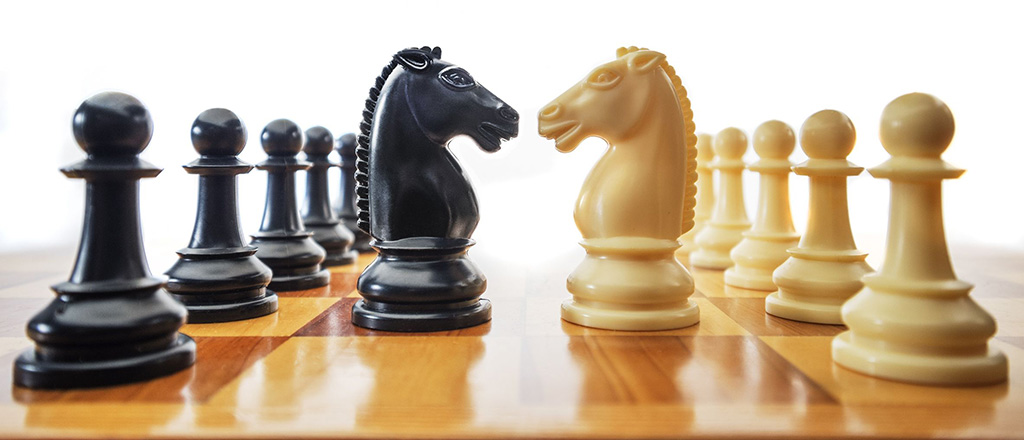Conflict as a Marketing Tool (CAMT) has its roots not in marketing but in screenplay writing. “This three-part structure [of setup, conflict, resolution] applies to Romeo and Juliet, Hollywood blockbusters and … sports as well.” But when we look at sports as an industry and we see its evolution today, we see a different dimension to it. Sports is entertainment and should be seen as part of the entertainment industry. But entertainment needs conflict. Sport in the classical sense should mean that as long as they play great tennis, who plays and who wins is irrelevant. Conflict in Business: Apple vs. IBM No less a person than Apple co-founder Steve Jobs used conflict skillfully to his advantage. Politics is Entertainment It was inevitable, then, that CAMT, would find its way into politics. When marketing had become so sharply professional in politics, it was perhaps inevitable that CAMT would be used in politics, along with all the other tools available. This has been done with great success by Trump. We make no value judgment here.

The dramatic tensions that characterize a good movie plot are being adopted by the world of marketing, sports and even news and politics. That’s the argument of Alby Anand Kurian, founder-director of Emphasis, a marketing communications firm, whose clients included Procter & Gamble, Pepsi Foods, Nestle and Unilever.
In this op-ed, Kurian describes the idea behind Conflict as a Marketing Tool (CAMT). He says the basic movie plot treatment of “setup, conflict and resolution” used to grab audience attention are being used in many scenarios outside of Hollywood. Kurian also teaches at the MBA programs of the University of Bradford and the Grenoble Business School at the Management Development Institute of Singapore. His first book, The Peddler of Soaps, made the India Today bestseller list.
Conflict as a Marketing Tool (CAMT) has its roots not in marketing but in screenplay writing. You will find frameworks for screenplay writing in textbooks on the subject — Syd Field’s Screenplay: The Foundations of Screenwriting is generally acknowledged as an authoritative source. Field details how nearly all screenplays can be broadly divided into three sections: setup, conflict and resolution.
“Setup” consists of the introduction of the characters, the stage, the setting, the situation and the various relationships – that is, the background to the entire story. “Conflict” is the backbone of all screenplays; without it, the story becomes a yawn. Whether it’s Romeo and Juliet, The Godfather, a soap opera or even religious texts such as the Bible and the “Ramayana,” without conflict, the narrative would not come alive. Finally, of course, there’s “resolution” – does it end in tragedy or does all end well?
This three-part structure applies to Romeo and Juliet, Hollywood blockbusters and we are now going to apply it, in the first instance, to sports as well.
The Screenplay of Sports
In the evolution of an economy, once conditions for survival are in place, you will find that a fair share of the country’s economy is devoted to entertainment — television, cinema and so on. As society further evolves, you tend to find that a fair share of the money is then taken up by sports.
Now, sports are truly wonderful – remember the quote about the Battle of Waterloo being won on the playing fields of Eton? It teaches one fair play, it makes one physically fit, mentally alert and all those marvelous things. All of us learn to admire the natural-born skills of a sportsman and we admire the technique that he has perfected.
“This three-part structure [of setup, conflict, resolution] applies to Romeo and Juliet, Hollywood blockbusters and … sports as well.”
But when we look at sports as an industry and we see its evolution today, we see a different dimension to it. It still is about admiring a sportsman’s skill, technique and temperament, but today it must be seen as entertainment. There is a natural resistance in us to think of it as such — sports seem of a higher order than mere “entertainment.” It seems as though we are bringing it down a notch or two; as though it makes it lesser than what we thought it was.
Now, whether this makes it less or not is a different matter — what we are establishing here is what sports is today. Sports is entertainment and should be seen as part of the entertainment industry.
So how do the rules of entertainment, that have evolved over the years, apply to sports?
Let’s take the example of Wimbledon. In the setup phase, there is the game of tennis. It’s a game that has been played for a very long time, it has a long history and tradition to it – it’s probably the most gentlemanly of games – and nowhere as raucous as football. And, of course, Wimbledon is also about the royal box and eating strawberries and cream as much as it is about the sport.
But entertainment needs conflict. Enter tennis stars Martina Navratilova and Chris Evert, Jimmy Connors and Bjorn Borg. Sport in the classical sense should mean that as long as they play great tennis, who plays and who wins is irrelevant. But that is certainly not the case, is it? Enter Rafael Nadal and Roger Federer and one finds that the audience has already taken sides.
So, in a cricket match between India and Pakistan (two countries that have gone to war with each other), it is obvious that interest will run high, even if the battle is now on a playing field and not in a combat zone.
The Indian Premier League was a bit of a question mark, really. Where would the conflict happen, who would be “Us,” who would be “Them?” But the conflict between the different clubs was created…

COMMENTS